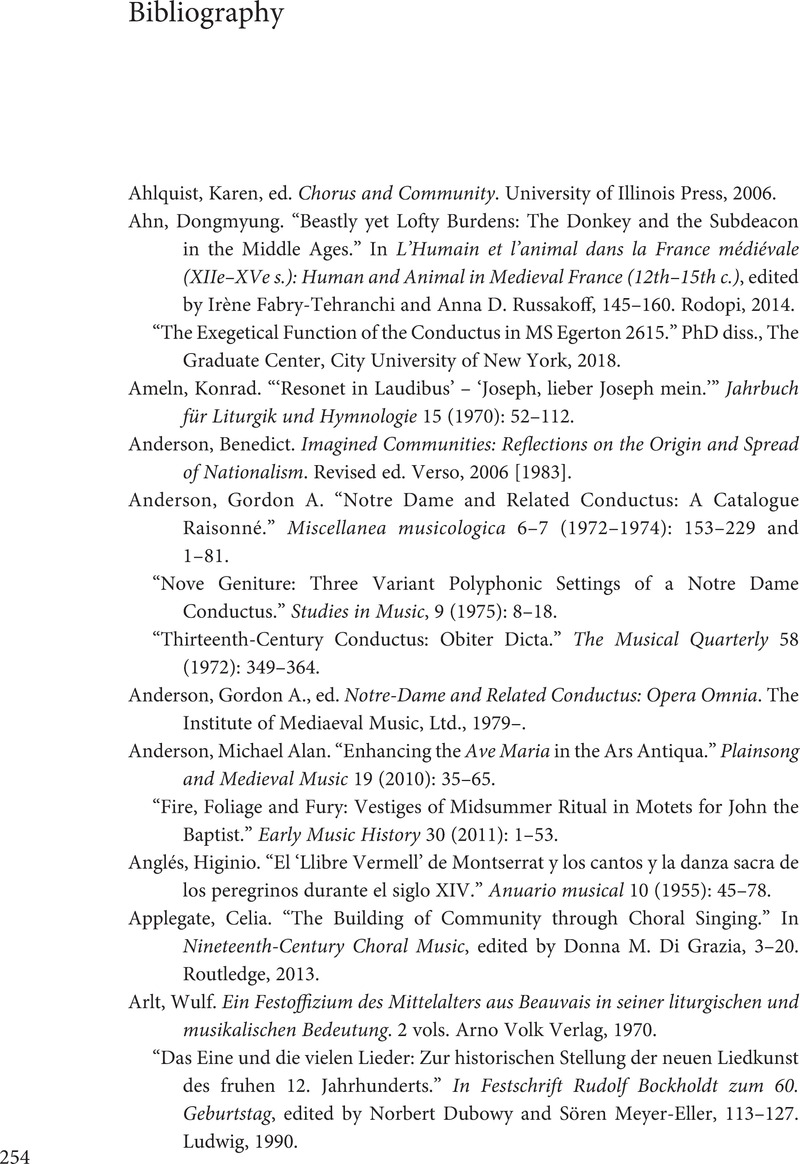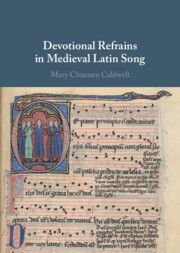Book contents
- Devotional Refrains in Medieval Latin Song
- Devotional Refrains in Medieval Latin Song
- Copyright page
- Dedication
- Contents
- Figures
- Tables
- Music Examples
- Acknowledgments
- Abbreviations
- Introduction: Latin Song and Refrain
- 1 Latin Song and Refrain in the Medieval Year
- 2 Refrains and the Time of Song
- 3 Singing the Refrain
- 4 Remembering Refrains
- 5 Retexting Refrains
- 6 Conclusion
- Appendix Latin Refrain Songs
- Bibliography
- Index of Works
- General Index
- References
Bibliography
Published online by Cambridge University Press: 24 March 2022
- Devotional Refrains in Medieval Latin Song
- Devotional Refrains in Medieval Latin Song
- Copyright page
- Dedication
- Contents
- Figures
- Tables
- Music Examples
- Acknowledgments
- Abbreviations
- Introduction: Latin Song and Refrain
- 1 Latin Song and Refrain in the Medieval Year
- 2 Refrains and the Time of Song
- 3 Singing the Refrain
- 4 Remembering Refrains
- 5 Retexting Refrains
- 6 Conclusion
- Appendix Latin Refrain Songs
- Bibliography
- Index of Works
- General Index
- References
Summary

- Type
- Chapter
- Information
- Devotional Refrains in Medieval Latin Song , pp. 254 - 278Publisher: Cambridge University PressPrint publication year: 2022



